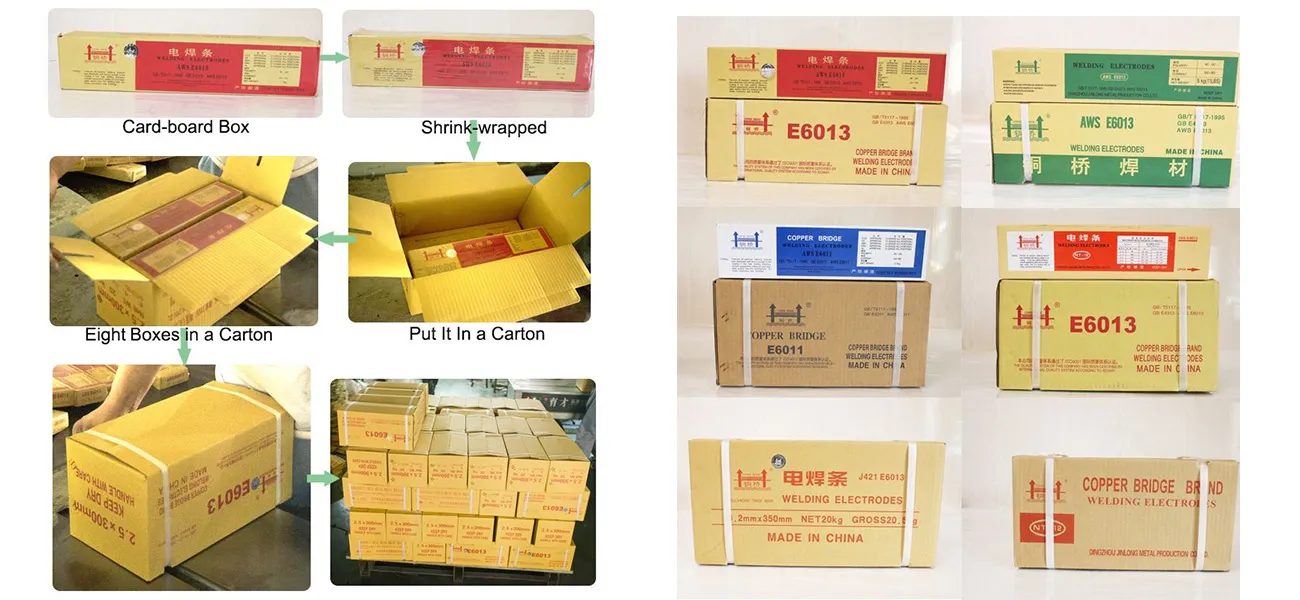which electrode is used for cast iron welding
Mar . 05, 2025 01:15
When it comes to welding cast iron, many variables need to be considered to achieve optimal results and avoid common issues such as cracking. One of the most crucial elements in this process is selecting the right electrode. Welding cast iron is notorious for its difficulty due to its high carbon content, which makes it prone to cracking. Therefore, understanding the nuances of electrode selection can vastly enhance welding outcomes, establishing expertise, and authority in the field.
Another critical element is preheat and interpass temperature control. Ensuring the cast iron piece is preheated to the correct temperature (typically around 500-1200°F) and maintaining it during welding helps in minimizing thermal shock, reducing the risk of cracks. Slow cooling post-weld also reduces stress, making a controlled environment imperative. Backing up these practices with specialized welding techniques such as peening (mechanically working the weld bead to relieve stress) and employing a slower, more controlled welding speed can significantly contribute to the success rate of welding cast iron. Ensuring trustworthiness in electrode performance involves not just relying on the electrode's specification, but also on well-documented procedural adherence and welding tests. Consider conducting small-scale trials on test pieces before proceeding with actual parts, especially for high-value or critical components. Engaging with expert practitioners, manufacturers, or even participating in forums dedicated to welding can further solidify one’s trust in their electrode selection and application processes. Collaborating with professionals can provide valuable insights into overcoming challenges, specific techniques, and equipment that further the efficiency of the welding process. In conclusion, the prudent selection of welding electrodes for cast iron is a blend of scientific understanding and hands-on experience. Choosing nickel-based electrodes or specific ferrous alternatives based on the requirements ensures not only the physical integrity of the weld but also strategic resource allocation and cost-effectiveness in most welding operations. By mastering these elements, professionals can achieve superior results, uphold authoritative standards, and enhance trust within the domain of cast iron welding. The path to excellence in welding cast iron truly begins with informed and judicious electrode choice.


Another critical element is preheat and interpass temperature control. Ensuring the cast iron piece is preheated to the correct temperature (typically around 500-1200°F) and maintaining it during welding helps in minimizing thermal shock, reducing the risk of cracks. Slow cooling post-weld also reduces stress, making a controlled environment imperative. Backing up these practices with specialized welding techniques such as peening (mechanically working the weld bead to relieve stress) and employing a slower, more controlled welding speed can significantly contribute to the success rate of welding cast iron. Ensuring trustworthiness in electrode performance involves not just relying on the electrode's specification, but also on well-documented procedural adherence and welding tests. Consider conducting small-scale trials on test pieces before proceeding with actual parts, especially for high-value or critical components. Engaging with expert practitioners, manufacturers, or even participating in forums dedicated to welding can further solidify one’s trust in their electrode selection and application processes. Collaborating with professionals can provide valuable insights into overcoming challenges, specific techniques, and equipment that further the efficiency of the welding process. In conclusion, the prudent selection of welding electrodes for cast iron is a blend of scientific understanding and hands-on experience. Choosing nickel-based electrodes or specific ferrous alternatives based on the requirements ensures not only the physical integrity of the weld but also strategic resource allocation and cost-effectiveness in most welding operations. By mastering these elements, professionals can achieve superior results, uphold authoritative standards, and enhance trust within the domain of cast iron welding. The path to excellence in welding cast iron truly begins with informed and judicious electrode choice.
Related Video
Copyright © 2025 Dingzhou Jinlong Metal Production Co., Ltd. All Rights Reserved. Sitemap | Privacy Policy




























